
Number of species in the collection: 1.
Pictures of Rhizogoniales:
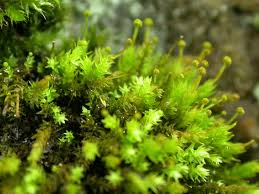
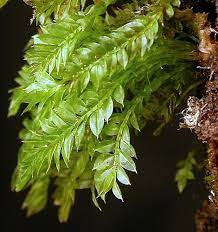
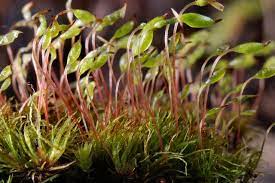
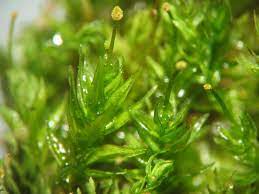
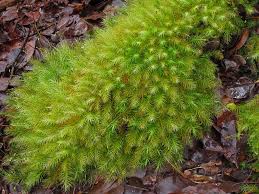
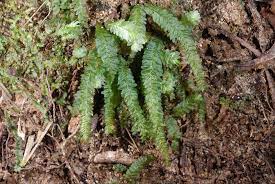
Characteristics of Rhizogoniales:
The order Rhizogoniales (a name they receive from the type genus Rhizogonium
and means with roots in the fruiting bodies) are a group of predominantly
tropical mosses with a very similar appearance to the rest of the mosses.
They are mainly acrocarpic type mosses (the sporangium is terminal) although
some species are pleurocarpic (the sporangium emerges on the sides of the
branches). The leaves have rounded or hexagonal, smooth or papillose cells and a
distinguishable vein. The perichecial leaves, those that surround the sporophyte,
have tomentum at the base, the sporophyte seta is short or long, the capsule has
its maximum width near the orifice, and it may or may not have teeth. The
calyptra is cucullated.
Phylogenetically they are located between the order
Bryales and Orthotrichales, in the
middle of the phylogenetic tree of mosses.
Species of Rhizogoniales present in the collection:
Pyrrhobryum spiniforme (Hedw.) Mitt.
Syn: Rhizogonium pervilleanum.
22-November-2019.
Africa, Madagascar, Toliara province, Anosy region, Tôlanaro district, 19 Km
northeast of the village of Analamary, mountains close to the Toliara province
border, future protected area of Beampingaratsy, in the junction of two rivers
that flow to Analamary (camp area of a Nanto Trip 6 expedition in collaboration
with the ONG Nitidae), 538 meters above the sea level. In a never explored area
of virgin shadowy rainforest. Growing on trunks close to the soil.
Coordinates: 24°08'23.7"S 47°04'29.5"E.
Obs: Boluda 17839.
Collected by: Carlos Galan Boluda.
Identified by: Carlos Galan Boluda.
Domain: Eukaryota.
Kingdom: Plantae.
Phylum: Bryophyta.
Class: Bryopsida.
Order: Rhizogoniales.
Family: Rhizogoniaceae.
Genus: Pyrrhobryum.
Species: Pyrrhobryum spiniforme.
-
Forma almohadillas o coberturas extensas, verde oscuro brillante, a veces
amarillentas o amarronadas al envejecer, con los tallos dispuestos laxamente, de
aspecto plumoso debido a las hojas. Los tallos miden 1-6 cm de longitud, son
simples o raramente se ramifican y la base frecuentemente es acanalada, con
rizoides de color pardo rojizo, papilosos. Las hojas se disponen laxamente a lo
largo del tallo, miden 5-8 x 0.4-0.8 mm, tienen un nervio que las recorre desde
la base hasta el ápice, el margen con dientes dobles y son prácticamente
lineares, estrechándose gradualmente desde la mitad de su longitud hasta el
ápice, el cual frecuentemente termina en un diente doble. Las células de la
lámina son uniformemente subcuadradas o cortamente rectangulares, de 7-14
micrómetros y las basales marginales de cuadradas a rectangulares, de 14-30 x 10
micrómetros. El esporófito emerge de la base de los tallos estériles, tiene una
seta de 4-6 cm y la cápsula de 1.5-3 mm, con el cuello corto, el opérculo de
1.5-2 mm, los dientes externos del peristoma anaranjados en la base e incoloros
hacia el ápice y los dientes internos casi incoloros.
Se distribuye por las regiones tropicales y subtropicales húmedas de todo el
mundo. Crece sobre suelo, bases de troncos o troncos caídos al suelo. En algunas
regiones puede ser una especie común.

Order: Rhizogoniales